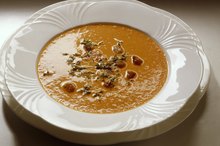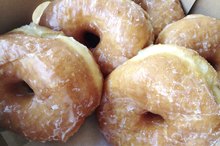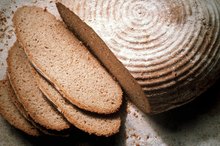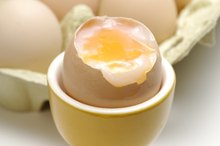Gluten Sensitivity and Yeast Allergy
Do you feel ill after eating a slice of bread? Have multiple doctors insisted you don’t have celiac disease? You are not alone. Many people who test negative for celiac disease experience symptoms similar to people diagnosed with it. If your symptoms improve after removing bread from your diet, you may in fact have non-celiac gluten sensitivity or a yeast allergy.
Following a gluten-free diet involves avoiding the protein gluten, which is found in wheat, barley, and rye.
Gluten Sensitivity and Yeast Allergies
Gluten sensitivity and a yeast allergy may be confused for one another because they trigger similar symptoms, and because gluten and yeast are found in similar foods. However, while allergies to ingested yeast are relatively uncommon, non-celiac gluten sensitivity seems to be affecting more and more people because of increased consumption of gluten-containing foods (wheat products and processed foods). There has also been increased awareness, screening, and research on gluten intolerance (GI). Gluten sensitivity now affects an estimated 18 million people.
You are likely to have non-celiac gluten sensitivity if a diagnosis of celiac disease cannot be made, but your symptoms improve on a gluten-free diet. Symptoms of non-celiac gluten sensitivity include GI-related symptoms, joint pain, numbness in the legs, arms, or fingers, and headaches. Minimal intestinal damage occurs, but damage resolves when you eliminate gluten from your diet.
Gluten-Free Diet
Torula Yeast Allergy
Learn More
Following a gluten-free diet involves avoiding the protein gluten, which is found in wheat, barley, and rye. Many starchy foods, such as breads, pastas, and baked goods, must be avoided. There are also many not-so-obvious foods that may contain gluten, including French fries, soy sauce, and broth. If you see malt on a food label, the item contains barley and should be avoided.
Be cautious about gluten-free oats because their safety is controversial. It’s important to focus on maintaining a healthy diet of fresh fruits, vegetables, fish, meats, nuts, seeds, and dairy products. Get your fiber and B vitamins from gluten-free whole grains, such as brown rice and quinoa.
Yeast Allergy Symptoms and Treatment
On the other hand, a yeast allergy is the hypersensitivity to a protein found in yeast. Your immune system produces antibodies against what it believes to be a harmful substance and triggers allergy symptoms. Common symptoms include fatigue, joint pain, mood swings, wheezing, and digestive problems with vomiting or diarrhea. If an allergy is suspected, visit your allergist for a skin or blood test.
You can safely eat most fresh foods if you’re diagnosed with a yeast allergy. Unless they spoil or become rotten, meats, fish, and vegetables are yeast-free. Mushrooms are usually thought of as a vegetable but are actually a fungus and should be avoided.
Because of their high sugar content, fruits are more susceptible to yeast development. Obviously, breads, bagels, and rolls contain yeast, but you should also be wary of cider, beer, fruit skins, grape juice, soy sauce, and malt beverages.
Many grocery and specialty stores are packed with safe food options for people with gluten sensitivities and yeast allergies, and the future will only bring more exciting, gluten-free possibilities.
About the Author
Gluten & Yeast Free Foods
Learn More
Boyan Hadjiev, MD, has been a practicing physician for five years. He is double board certified in Internal Medicine, (2003), and Allergy and Immunology, (2005).
Dr. Hadjiev graduated from University of Michigan with a BA in biology and an MD from Cleveland Clinic-Case Western Reserve School of Medicine.
Related Articles
Resources
- Brewer’s Yeast. (2011, April 3). University of Maryland Medical Center. Retrieved October 4, 2012
- Gluten Sensitivity FAQ. (n.d.). University of Maryland Medical Center. Retrieved October 4, 2012
- What is non-celiac gluten sensitivity? (2011). National Foundation for Celiac Awareness. Retrieved October 4, 2012
- Niewinski M.. Advances in celiac disease and gluten-free diet. Journal of the American Dietetic Association. 2008;108:661.









